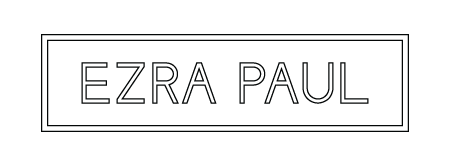Bespoke
As it relates to clothing, the term “bespoke” is widely misused and misunderstood. For decades, it was used exclusively by high-end clothiers, particularly on Saville Row in London, to convey the process by which their suits were measured and cut. Nowadays, it seems that every brand that offers any level of customization throws the term around like candy at a parade, while almost none of them are offering anything close to true bespoke. Because of the unscrupulous use of the word, it is important to understand exactly what it means before you assume that a clothier is using it rightfully and whether their product is actually superior because they’ve applied the term. There is no governing body doling out bespoke accreditation and as a result it’s become applied liberally. Fundamentally, it’s important to note that bespoke doesn’t refer to the quality of the construction of a garment, just the process.
To understand bespoke, it’s necessary to understand how it relates to the other forms of custom and pre-made clothing in regard to the fitting process and end result. Below, I’ve outlined the different terms and methods:
Ready-To-Wear/Off-The-Rack
Standard pre-made clothing is referred to as ready-to-wear (RTW) or off-the-rack (OTR). These are the garments that you will see hanging from the racks at a standard retailer. In men’s dress clothing, this was by far the most prevalent form for the bulk of the past 50 years. Concurrent with the trend towards fitted clothing that started about a decade ago, custom dress clothing has been on the rise. RTW/OTR is premade and thus can’t be customized in any way, other than with tailoring.
Made-To-Order
The first rung of the custom ladder is made-to-order (MTO). MTO customization is generally limited to details such as fabric, lapel style and lining color, but not fit. I’ve seen some MTO operations where things like sleeve length or jacket length could be adjusted, which would be sort of a hybrid between MTO and the next rung, made-to-measure (MTM). The lines between the levels of custom are quite hazy at times and these hybrid MTO operations will generally refer to themselves as MTM, even though they don’t offer much real customization to the fit.
Made-To-Measure
Made-to-measure is the broadest category and the one that has seen the most growth in recent years. Technically, MTM refers to the process of starting with an existing pattern and making adjustments – increase the waist, shorten the jacket, etc. What can and can’t be adjusted varies significantly by brand. It’s best to think of MTO and MTM as a continuum, rather than a hard line.
Bespoke
Unlike MTM, a true bespoke suit does not start with an existing pattern. Instead, the tailor uses your measurements to create a partially completed basted suit and then adjusts it through a series of fittings until it’s perfect (at least in theory). The torso of the jacket is constructed before the sleeves and lapels are attached. This process takes months and starts in the $6,000 range from reputable bespoke clothiers. The tailor that measures you is traditionally the same person who cuts the fabric and sews the jacket. It’s common for one tailor to specialize in the jacket and one in the trousers, a traditional division of labor that’s still in use in many bespoke operations. Because of the many fittings and time spent adjusting, the likelihood of a bespoke jacket fitting perfectly is higher than with MTM. However, when done properly, the same results can be obtained from either method.
Ezra Paul Custom
All Ezra Paul custom garments are made-to-measure. As I mentioned, MTM is a continuum and we are at the top of that continuum in what we are capable of adjusting. With a dynamic MTM program in the hands of an experienced clothier, the results can be identical between MTM and bespoke for most body types. Because we are able to adjust anything that could be adjusted in a true bespoke system, the quicker lead times and lower prices allow us to offer a high-quality, well-fitted garment at a much better value. You can read more about our process and construction here.
Importantly, the level of custom has absolutely no bearing on the quality of the suit. Luxury brands like Brioni, Kiton, Isaia and Tom Ford all offer MTM, not bespoke. Conversely, a quick Google search for bespoke suits turns up fly-by-night brands like iTailor, where you can measure yourself (!) and have a “bespoke” suit made for $179.
If It Sounds Too Good to Be True…
Here are some telltale signs that a clothier’s description of their custom program as bespoke is unscrupulous:
- Supplying your own measurements
- Ordering online
- No basted fitting (real basted, rather than just sewing some white thread on a jacket)
- Using an existing pattern
- Measuring and cutting not being done by the same tailor
- Measuring with a phone, lasers or any other gimmick
- Quick lead times
- One or two fittings only
- Price seems too good to be true
- Manufactured overseas
